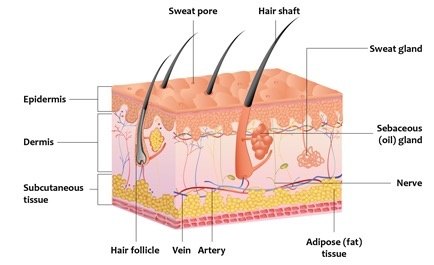Dermis
/dɝmʌs/
1. [noun] a layer of skin composed of a thin layer under the epidermis, the stratum papillary, and the stratum reticulare; it contains blood and lymphatic vessels, nerves and nerve endings, glands and, except for glabrous skin, hair follicles. See: https://medical-dictionary.thefreedictionary.com/dermis ; also Medical Dictionary for the Health Professions and Nursing © Farlex 2012. Accessed May 19 2019
Source: https://medical-dictionary.thefreedictionary.com/dermis

Frequently Asked Questions
How does the deeper skin layer contribute to foot sensations during everyday walking?
The sublayer stores nerve endings and blood vessels that help your feet detect changes in temperature and surface texture. This inner skin layer or 'dermis' aids in providing essential feedback when you walk on different terrains.
In what way does the inner skin layer protect the foot during daily activities?
This underlying layer supports the foot by housing important nerves and vessels. It helps maintain skin integrity, contributing to tactile feedback and overall foot resilience during activities like walking or standing for long periods.